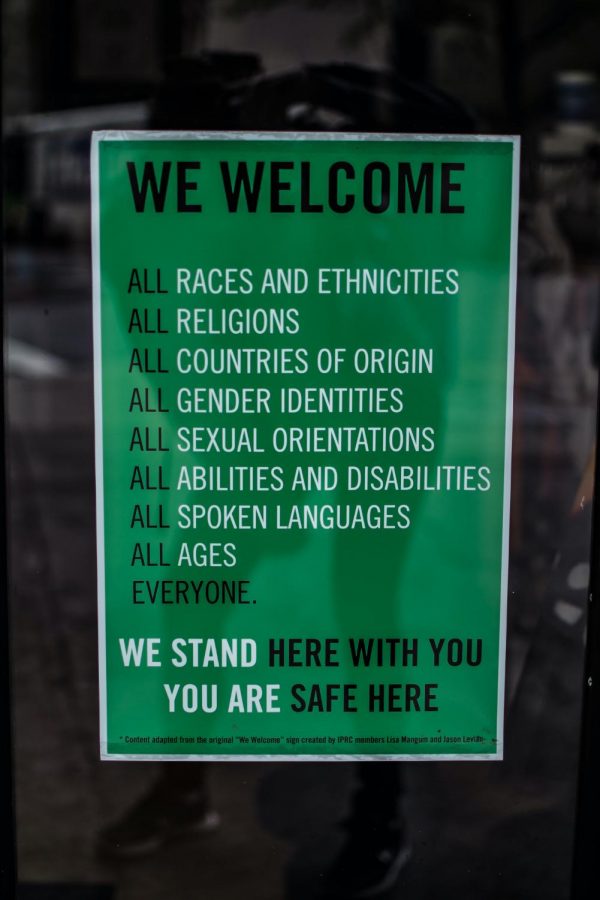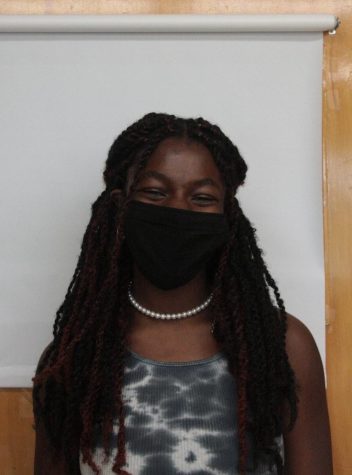Ethnic Studies and the Importance of the Counter-Narrative
May 14, 2021
Ethnic studies, a class that is offered at Ida B. Wells High School, has a long history of fighting to be accepted within the school system. This is because of the institutional lack of diverse representation, culture, and history.
A lot of the hostility towards these classes dates back to colonization and the erasure of Black and Brown cultures in American school systems. The purpose of ethnic studies classes is to make topics such as race, ethnicity, gender, and overall identity not only relevant, but necessary. This is something that is not a necessity in the eyes of those who continue to work towards silencing marginalized voices.
These courses not only go against erasure, but they provide a space that allows students to see history outside of the American lens we’re accustomed to.
Sarah LeMier is the ethinic studies teacher at Ida B. Wells-Barnett High School. “It really birthed from a conversation I had with a student — Oliver Odusanya[…] We talked about a lot of real stuff all the time, at one point he said to me, ‘how is it, that I have made it through all these years of school, never having learned about my own culture and identity–the only time that we discuss my experience as a Black man in America, is through slavery?”’.
“The only time he was ever able to see himself was as a victim,” said LeMeir. “He was like, ‘there are so many other things that we could have learned about, there’s so much history we could have learned about, why is it that as a 12th grader, I am leaving without ever having had this opportunity?”’
This conversation between LeMier and Odsanya took place around 4 years ago, and helped spark the movement that brought the course into our curriculum. “I felt what he was saying, and I thought a lot about that, particularly in the context that our school and the students of color, and the experience that they are having in this very white space,” said LeMier. Her vision for the class focused on making sure students of color had space made by and for them.
LeMier built the Ethnic Studies’ curriculum with the intention of focusing on healing and resilience. “I do feel like some things get more surface about the systemic structures that create inequality– that’s still focusing on harm,” LeMier said. “Particularly when we are talking about difficult subjects, it’s safe to stay in the thinking realm, and be more analytical about this process, versus, when we’re talking about these issues, this is harming and this is impacting students that are sitting in my class right now, in real life–we need to understand the fabric that we are a part of.”
After the class ultimately ended up on the forecasting schedule, LeMier needed to actually put the course together. “I reached out to some students–this was over the summer, I had 5-8 students–we met once a week for about 6 sessions. We dialed into thematic topics, and potential areas where we could contextualize themes,” LeMier said.
A Stanford study has shown that these ethnic studies classes actually produce real academic benefits. Attendance of those who were encouraged to enroll increased by 21%, and saw a 1.4 point improvement in GPA. There could obviously be multiple factors contributing to this data, but it is undeniable that these classes have created a draw to students. The focus on identity and intersectionality, and how they affect us, created a newfound sense of maturity and self awareness that regular class curriculums have yet to provide. “I made this course for Oliver,” said LeMier. “The design of the course, why it’s there, was to support our students of color, it’s for our students of color.”
Molly Coburn-Frary is a junior at Ida B. Wells who is currently enrolled in ethnic studies. “I wanted to take ethnic studies, to learn about race and what race means. I knew it was a class that would help me further my education, and be more knowledgeable on topics that seem to come up in my everyday life.” Coburn-Frary said.
Coburn-Frary added, “There’s not really any classes like ethnic studies at Ida B. Wells. I think a great solution would be to integrate some of our ethnic studies in our required classes like history or English.” Integration of ethnic studies into required curriculum could also prepare students for college.
Meama Scott, a Sophomore at University of Oregon, decided to enroll in African American studies her second semester. These classes consist of regular teachings of various cultures, beliefs, and values, but also provide a space for students of different backgrounds, to have conversations, and even consider showcasing the cultures within their own lives. “This being a class that is very literature heavy, we’re not only learning about African American history, but along with that, we are also learning about Afrcian culture and how they relate to each other,” Scott said. “I’m reading a lot of books that I otherwise would not read on my own time, and it’s amazing.”
Ethnic studies has to be taught in a way that defies the systems that have historically been put in place to erase culture. “There’s not enough affirming culture at [Ida B. Wells], for our students of color. We need to deeply invest in identity first, and strength, resilience, and healing. This class for [Ida B. Wells], is a place of healing as well.” said LeMeir.
“White supremacy is hierarchical,” said LeMier. It has paternalism. There is one person who holds all of the knowledge. If you want to do something that is counter-cultural, that walks the walk, it means removing the power from the teacher, and shifting power to the student, to be willing to say “you have value, you contribute– and not in a tokenizing way–it has to be collaborative.”
As a white teacher, LeMeir had to take time to evaluate that part of her identity. “One of the things that I need to do constantly as a white person, is to reflect on how whiteness shows up in myself,” said LeMier. “We aren’t raised to see ourselves as having a race. We speak about it (culture) as what we see somebody else doing, an inadvertent externality of that is that we’re othering people. ”
This course not only provides a space for BIPOC students to process and articulate these subjects, but it also forces white students to step out of the mindset that LeMier referred to, “–when you don’t identify that you have your own culture, the bias is that it’s superior.”
When it comes to this class being an elective rather than a requirement, LeMeir was able to give reasoning behind that. “I actually wrestle with whether or not it should be a required course,” she said. “It’d be easy for me to list all the reasons why it should be a required course–that’s a no brainer, but I want to hold a critical perspective–it’s an elective, meaning that people who want to be there are there.” The idea of a class like this being full of students that joined it out of interest, greatly influences the way that this course is received. “How does that change the conversation when people want to be there, especially if it’s a collective class? The experiences are dependent on the students who are there, who drive the context,” she said.
Coburn-Frary said, “It’s important that we also pay attention to social justice topics, because history is continuously being made. It’s important for a class to center racial identity, because it opens conversations up on what it means for other people and how it affects us.”



